Our reports offer insights into artists’ experiences and what they need to thrive. We share our findings with funders and the arts community to strengthen our collective work.
The Bay Area Arts and Culture Organizational Sustainability Survey
The Bay Area Arts and Culture Organizational Sustainability Survey (PDF) examines the financial and operational trends of small and mid-sized theater, dance and performing arts organizations from 2019 to 2023. The findings affirm the challenges and highlight opportunities they faced as they navigated pandemic recovery. The report also shines a spotlight on micro-organizations with budgets under $60,000, which are an often overlooked yet vital piece of the region’s cultural fabric. The Foundation commissioned SMU DataArts, the National Center for Arts Research, to conduct the research to better understand the realities of the Bay Area arts ecosystem.
Key findings from the report include:
- Performing arts organizations face revenue challenges amid rising costs and a shifting funding landscape.
- The experiences of dance and theater groups are different.
- In person attendance rates and program offerings are increasing, but earned revenue is still in a recovery state.
- Replacing the unprecedented pandemic federal funding remains a challenge.
- Micro-organizations are nimble and demonstrate resilience by investing in their communities and artists.
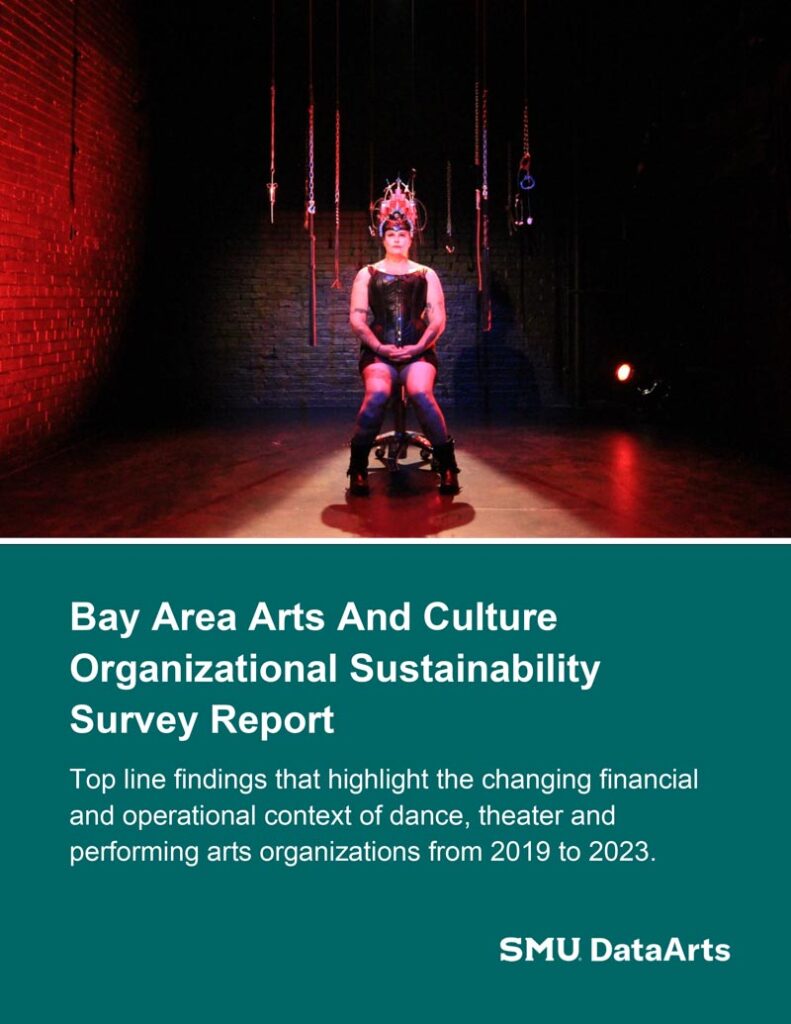
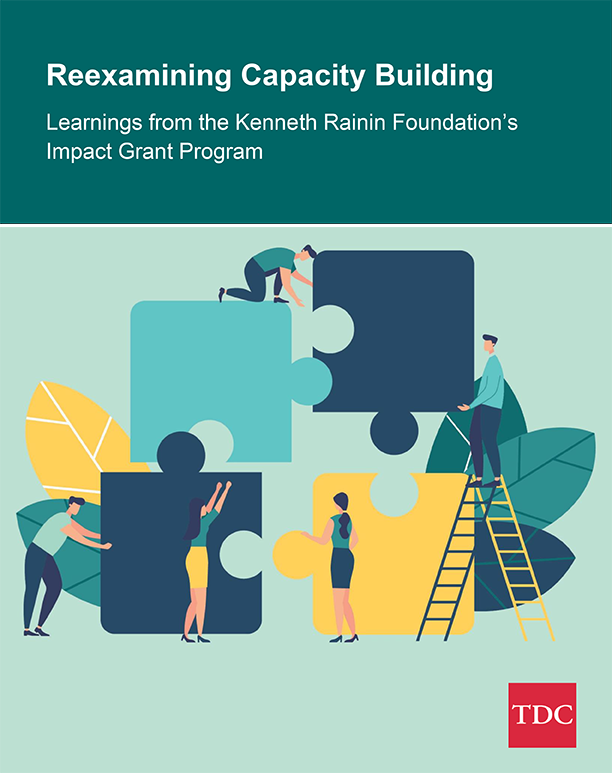
Reexamining Capacity Building
Reexamining Capacity Building: Learnings from the Kenneth Rainin Foundation’s Impact Program examines the experience of grantees, identifies systemic issues and offers recommendations to better support small arts nonprofits. It was written by TDC, a nonprofit management consulting and research firm.
From 2012-2020, the Impact Grant Program provided multi-year capacity-building support to 21 small and mid-sized dance, theater and multidisciplinary arts organizations. While the report reveals that most grantees didn’t meet their goals, this isn’t a reflection of their efforts. Rather, it highlights the Program’s flawed assumptions about the time, resources and conditions needed for success.
Key highlights:
- Although some organizations achieved success, many Impact Program participants faced systemic challenges, which require systemic solutions.
- The focus on organizational growth over stability was detrimental to most grantees. Capacity building should continue to be redefined, as it was in the Impact Program, to avoid implying that growth is necessary.
- Capacity building efforts should meet organizations where they are, tailoring the support and creating trusting, open relationships with clearly defined and shared objectives.
Lessons From 10 Years In Cultural Real Estate
Community Arts Stabilization Trust (CAST) was founded in 2013 as a solution to create stable spaces for arts and cultural organizations in the San Francisco Bay Area. Through real estate expertise and access to innovative financial tools, CAST prevents the displacement of community-based arts and cultural organizations from rapidly increasing rents in the San Francisco Bay Area and ensures their long-term stability.
With the success of the CAST model, which was proof-tested during the COVID-19 pandemic, and on the occasion of their 10-year anniversary, the Kenneth Rainin Foundation commissioned WolfBrown to interview CAST’s senior staff members about the evolution of their work over the past decade. Lessons from 10 Years in Cultural Real Estate, prepared by John Carnwath, outlines five key takeaways and insights from these interviews to benefit the wider arts and cultural field:
- Identifying and Cultivating Partnerships
- Covering the Costs
- Accessing Low Interest Financing and Other Market Incentives
- Maintaining an Ownership Stake
- Supporting Individual Artists
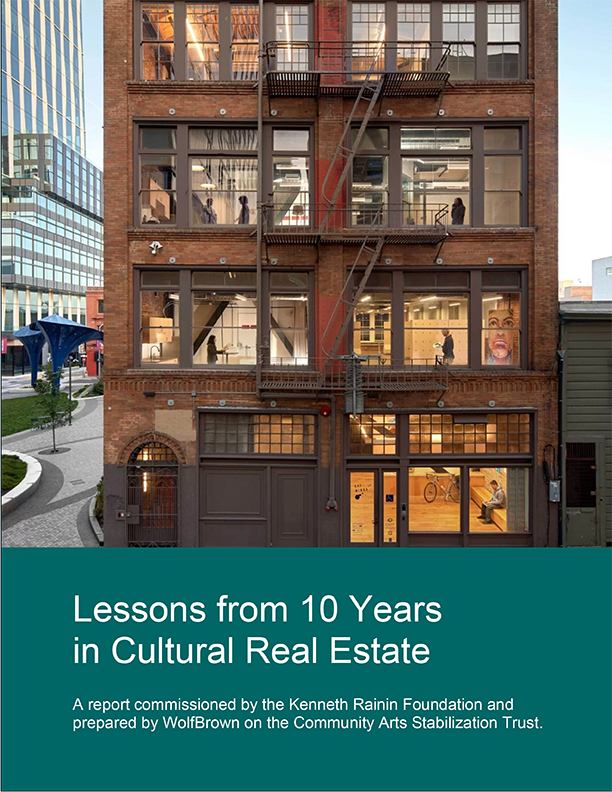
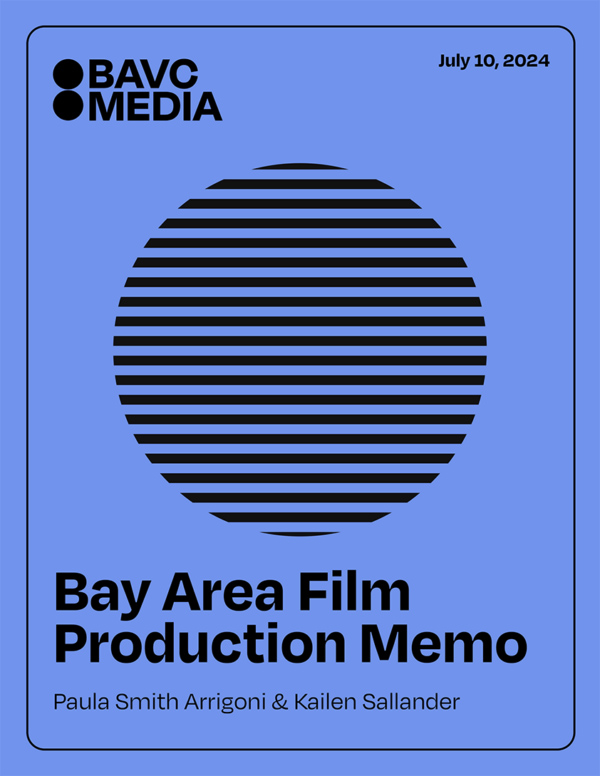
Bay Area Film Production Memo And Research Study
BAVC Media’s 2024 Bay Area Film Production Memo and research study share strategies to boost film production in the Bay Area and the associated economic and social benefits. The memo compares Bay Area tax incentives, institutions, collaborations and filmmaker pipeline infrastructure with other US regions. The research consisted of a survey of over 300 Bay Area filmmakers and a field scan of other film and media markets with 17 interviews across seven states. The Rainin Foundation helped support this research to better understand how to best support local filmmakers.
Key findings include:
- Media makers are performing multiple roles and occupations to make ends meet.
- A significant portion of filmmakers are struggling with career progression.
- Documentary filmmakers earn more money overall and derive a greater share of their income from their media work than narrative filmmakers.
- Several cities successfully gained the support of their public officials by bringing them to production sets and educating them about the varied jobs that are created and sustained through film productions.
Pandemic Relief & Recovery
The 2021 Pandemic Relief & Recovery: Emergency Funding & The Bay Area Arts Community report examines the impact of local and national COVID-19 pandemic relief funding on individual artists and small to mid-size arts organizations, with a focus on racial equity. The Rainin Foundation collaborated with four Bay Area funders and commissioned Vogl Consulting to conduct the research.
The report illuminated pronounced disparities impacting the region’s Black, Indigenous and People of Color (BIPOC) artists and organizations. Study participants conveyed clear, compelling calls for additional resources to meet immediate and ongoing needs and more equitable grantmaking practices.
Key recommendations offer funders vital insights:
- Unrestricted, multiyear funding, “start-back” grants and technical support to adapt to an evolving operating environment.
- Greater transparency and coordination among grantmakers and more streamlined procedures.
- Meaningful investment in racial equity and dismantling barriers to funding.
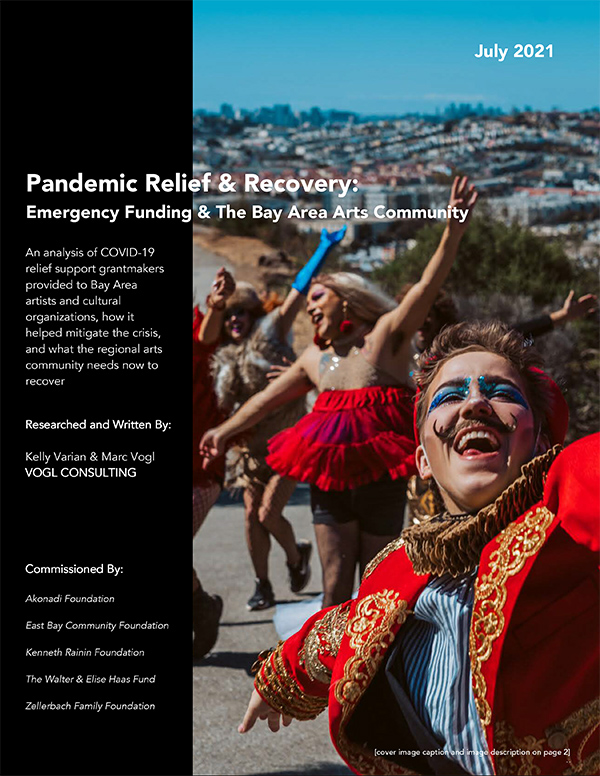
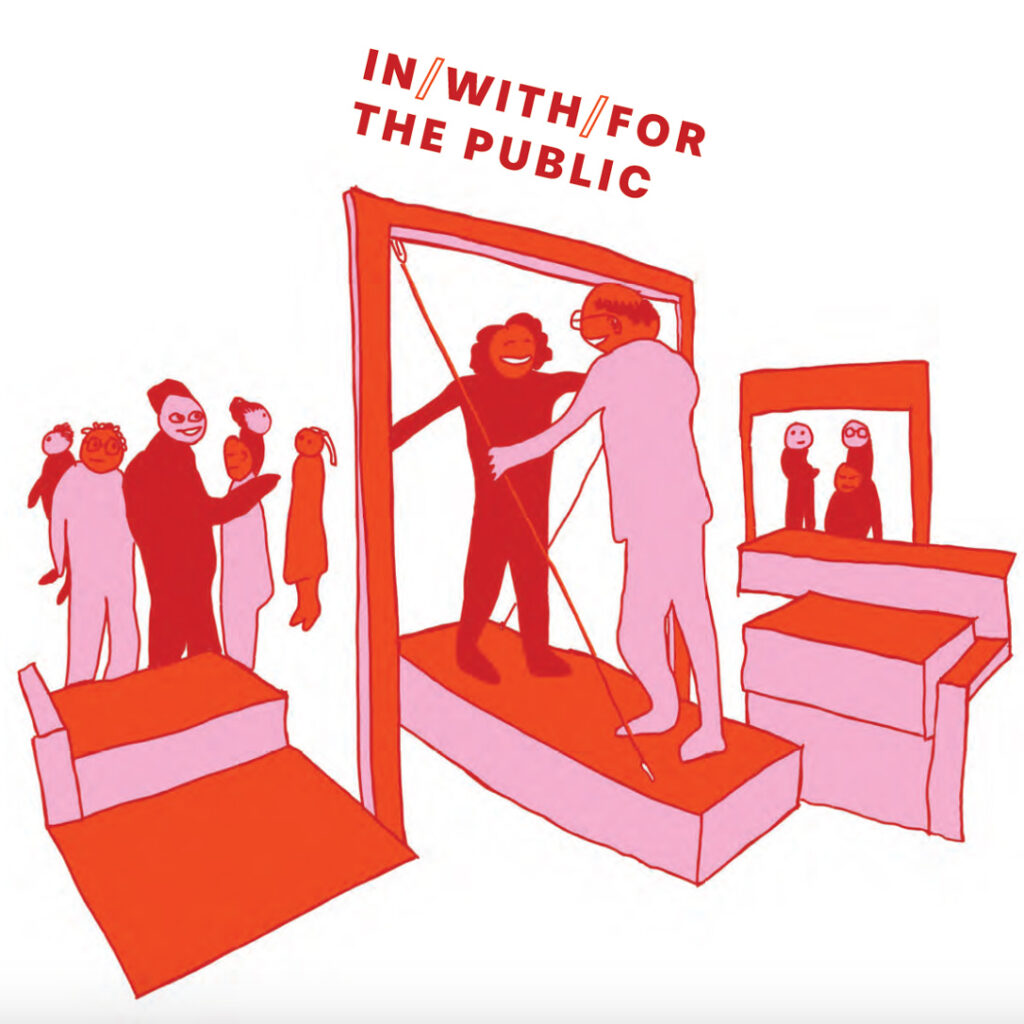
In/With/For The Public
The Rainin Foundation partnered with Art Practical in 2020 to produce In/With/For the Public, a thematic issue that invited artists to share first-hand experiences making art that engages with the public. Their insights are captured through writing, illustrations, diagrams, collages and recorded conversations. The result is a generous offering of reflections and expertise gained through years of thoughtful practice, along with resources for artists who are just getting started working in the public realm.
A few highlights include:
- Ellen Sebastian Chang framing public practice as “….an invitation to develop an understanding of One and Other, through better questions, shared accountability as well as shared responsibility, acknowledging where control and gatekeeping resides in all aspects of the creative relationship.”
- Sonia Guiñansaca emphasizing the importance of time in the development of relationships with community. “As cultural workers, creatives, and artists, we do not parachute into a community. We build. We build. And building takes time.”
- The Future IDs collaborators inviting readers to examine power, emphasizing “Power is a cultural, social, political, and economic construct…forming authentic partnerships requires understanding the fluidity of who holds weight in a particular moment…”
Mapping Small Arts and Culture Organizations of Color in Oakland
The Rainin Foundation partnered with Akonadi Foundation in 2018 on Mapping Small Arts and Culture Organizations of Color in Oakland, a benchmark report that fills a critical gap in research on small organizations serving people of color. It was authored by Creative Equity Research Partners and features 138 organizations with budgets of $250,000 or less. The report outlines the characteristics, strengths and needs of these grassroots organizations to build understanding and spur investments by funders and policymakers.
Key findings from the report include:
- Nearly 50% of these organizations serve a diverse constituency of people of color.
- Over one-third of the organizations serve Black populations, mirroring the overall percentage of Black people in Oakland.
- About 12% of the organizations have a social enterprise model. This means that they use a for-profit model or component that allows them to provide programs or space to the community at low or no cost.
- Lack of fiscal sponsorship capacity and limited general operating funds are central challenges.
- Organizations are also facing rising operating costs and high risk of displacement, due to gentrification, from the communities they serve.
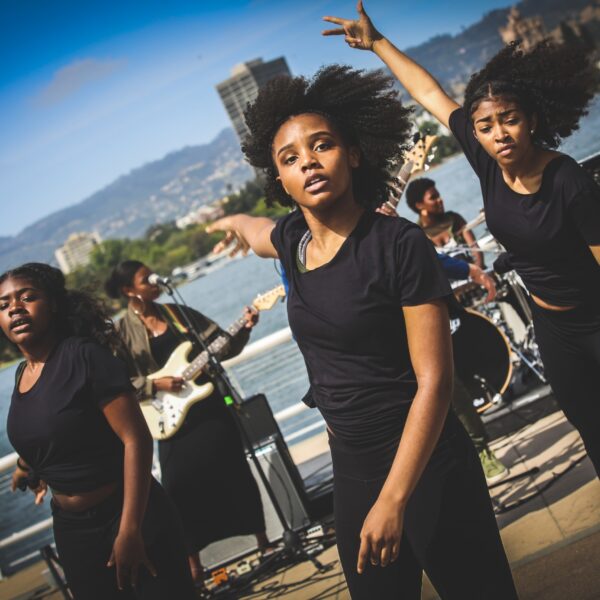
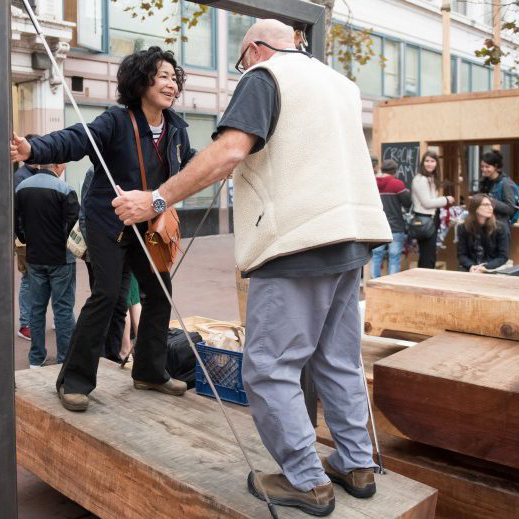
How Public Art Exposed Class Tensions in San Francisco
The Kenneth Rainin Foundation awarded our first public art grant in 2015 to the Luggage Store Gallery for “Light Up Central Market.” The project included illuminating murals and installing “Block by Block,” a platform intended to offer a space for gathering, fun and interaction.
We knew this was an experiment to install art on a busy street known as much for crime and homelessness as swank cafés and sleek towering apartments. The Rainin Foundation understood the tensions in San Francisco’s Central Market neighborhood going in, yet we firmly believed, along with our partners, that the community would benefit from a public art project that brought people together. But within weeks of the installation, the experiment looked to be teetering. Our collective good intentions entered sticky territory: Just whom is public art meant to serve?
To gather diverse perspectives and share collective learnings, we hired a writer to talk with various stakeholders and have presented their thoughts in “as told to” style narratives. Read Eight Conversations About Art, Class and Race and the insights we gained from this public art project.
